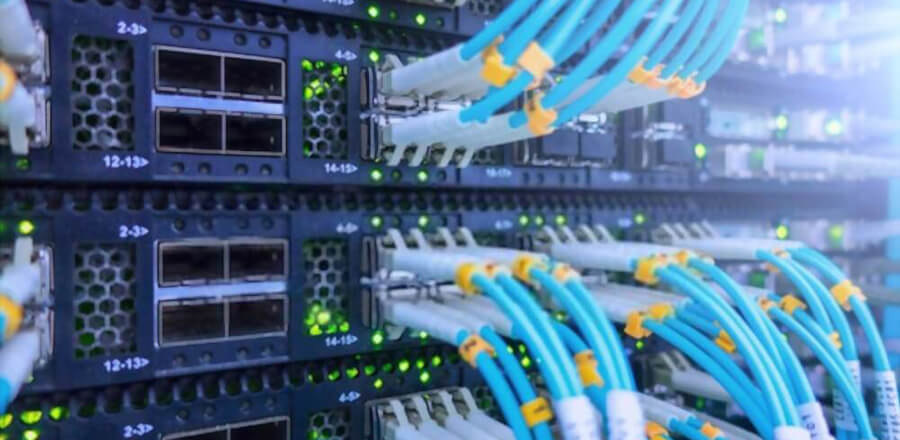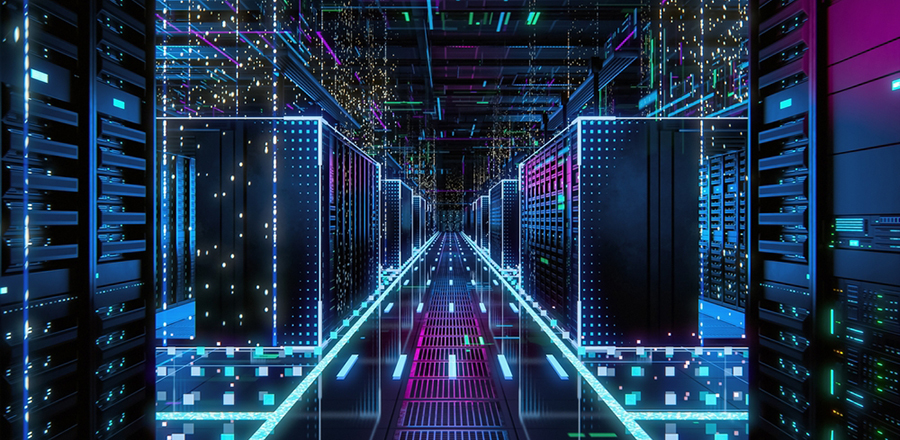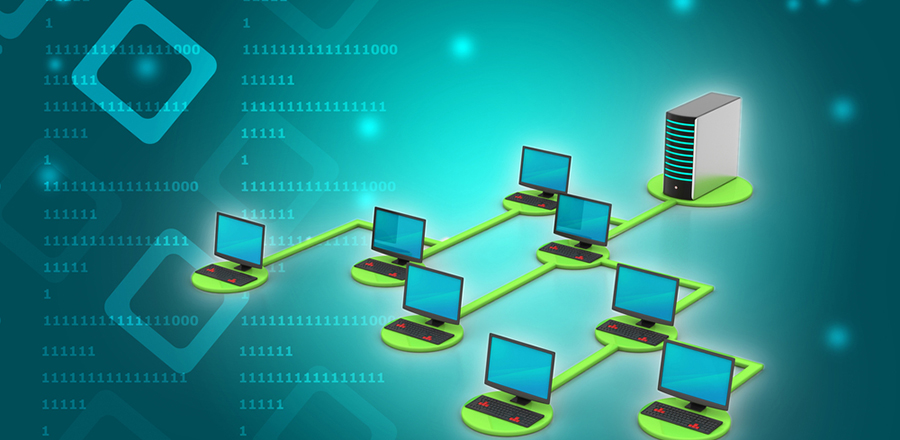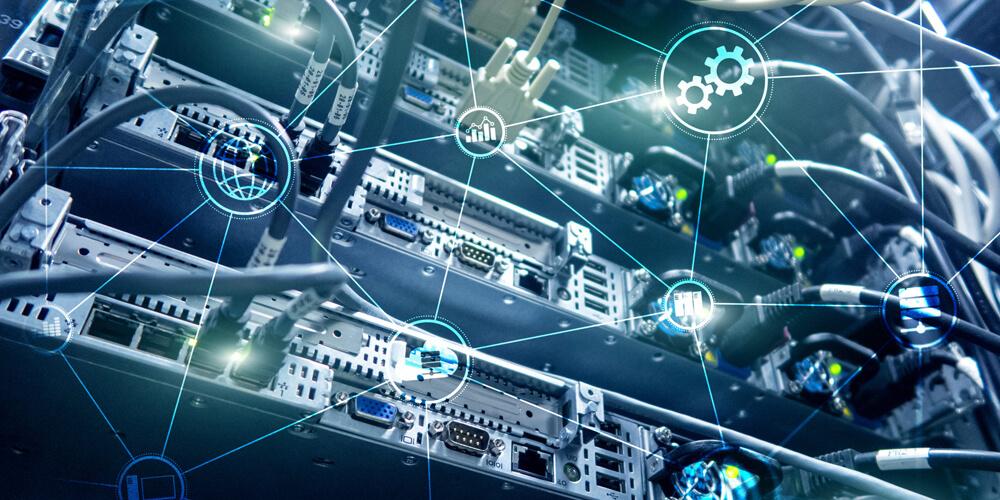In today's business world, social media and online presence play an important role, and businesses depend on network infrastructure for handling several daily operations. As a result, networks are not just about connecting devices to different machines, phones, tablets or other pieces of hardware; it is about securing and managing the systems effectively.
An effective network infrastructure ensures the company gains new clients and retains the existing ones through proper communication, connectivity and on-time delivery of services.
Companies use encryption keys and install management tools to handle network-related services where a VPN or a virtual private network allows connecting to the trusted network instead of unsecured ones.
 What is Network Infrastructure?
What is Network Infrastructure?
Communication between the client and the business is crucial as it helps retain customers. In addition, businesses can manage follow-ups to ensure order confirmation, which gets them satisfactory customer responses.
Network Infrastructure refers to the field of IT related to network services. It includes devices used to connect and communicate, like networking hardware, facilities, services and software.
A network management system allows you to use methods to organise the network tools and use the latest technologies to secure networks where customised policy determination for malware protection, password encryption, monitoring & logging, remote access, and removable media can help lower vulnerability to cyber attacks.
What Does Network Infrastructure Mean?
A network is the collection of computers, mainframes, servers, devices and peripherals that allow data sharing, whereas the network infrastructure is the global collection of networks.
It includes small and large networks connected through different types of mechanisms as they all form a single entity called the Internet. The name internet - comes from the interconnectivity of networks.
Several businesses depend on network design for their daily operations, especially in areas where reliable customer contact ensures growth in customer base and effective services allow the firms to retain the current customers. In addition, the system ensures communication between the client and business and helps to keep hold of customers through phone or mail.
 Types for Network Infrastructure
Types for Network Infrastructure
Examples of network infrastructure are -
Hardware - Cables, wireless routers, LAN cards, and switches are part of the hardware system.
Cabling provides a channel to pass information, data, and communication through equipment like optical fibre or Cat 5, Cat 6.
It connects the key parts of the business technology equipment to create network systems which can function effectively.
The system allows the business to add new equipment or resources and can help deliver seamless integration of systems, which ensures expansion and effective management of changes in the business.
The telecom cables are connected to various business systems like fire and security. Nevertheless, the requirement of individuals widely depends on the type of business and the size of the operation.
Cabling provides a cost-effective, scalable and simple system, which can reduce the risk of downtime and lower IT problems in a business.
Ethernet includes the cable, computing devices, hubs, switches and routers in network infrastructure.
Routers - Routers direct traffic, and it is used to connect devices and networks. It helps the traffic move from one place to another on the Internet. It ensures the right bits of data end up in the right place. It can read the incoming data and send it to the desired location.
Switches - Switches connect devices on the network by forwarding traffic. It differs from routers as it is the device used to create the networks; even as routers connect networks, the computers in any office are connected to switches that make a LAN. It helps to connect all technology bits like phones, laptops, lights, servers, screens and mobiles. The switches communicate with other devices and help create a powerful communication system.
Hubs are the points or switches that can forward the traffic to all the connected devices.
Bridges - It creates a single network for multiple networks.
Wireless central hub and Wireless Access Points -
The hardware that allows wireless devices, i.e. Wi-Fi, to connect to a wired network is used to create a quick and effective network with devices that can operate on a wireless basis.
These days, most businesses require wireless equipment and services which do not require wired operations. Therefore, it is especially useful for small businesses that have become lean and agile with the help of wireless connections.
Wi-Fi connectivity has become integral to many businesses like travel and hospitality. It is the service which helps to monitor traffic and market trends.
Software - The software includes network security applications, operating systems, firewalls, network management and operations. The networks depend on the operating systems, as dedicated software is required to ensure the hardware remains connected to the devices.
Firewall - The firewall provides a way to regulate traffic, which is governed by rules and parameters set in the firewall. It determines the security and safety of the data and communication channels. In addition, it is used to determine what type of traffic is allowed and what is not.
Server
The server is the computer that provides service to other computers. For example, a web server provides web pages to client devices.
Load balancers distribute work to servers, allowing services to scale horizontally.
The network also involves IP addresses, satellites, wireless protocols, DSL, etc.
Gateways - Gateways are devices which can provide an interface between different types of networks. It translates between various types of signals and protocols.
Proxies - Proxies make requests on behalf of clients. Such devices monitor, filter and log the traffic on the corporate network.
Also, a reverse service proxy can be found, which appears to the client to be a server, but it forwards requests to the servers. The reverse proxy performs services like load balancing, security and encryption.
What is IT infrastructure?
IT infrastructure involves computer hardware, OS, enterprise software platforms, networking/telecommunication platforms, Internet, DBMS and consulting services.
The basic components of IT infrastructure are switches, routers, firewalls, servers, data centres, human resources, etc. Almost all offices need a desktop computer, switches, routers, servers and equipment to provide intranet or internet connectivity.
It provides full visibility and control over all the assets held by the firm. It is the central system responsible for ensuring seamless service to the customers.
The data centre in the internet infrastructure involves media transmission like fibre optic cables, microwave - a line of sight - antennas, satellites, routers, repeaters, aggregators, load balancers, and other components, which can control the transmission paths.
ISPs like AT&T and Verizon build, design, and operate the infrastructure. When a business engages in ISP internet access, it is tied to the data centre infrastructure.
How infrastructure must be designed has been changing with the introduction of the cloud. For example, traditional business data centres were mostly private capital-intensive units.
The traditional heterogeneous system involved a manual process that required enormous integration, system management efforts and optimisation. Therefore, it was especially useful for integrating various vendors' servers, networks, storage and other components.
Today, vendors provide a pre-integrated and pre-optimised collection of devices which can optimise IT hardware and promote virtualisation into one system that can be deployed, managed and expanded easily.
The latest cloud system provides access to data centre infrastructure, offering a service for a fee. In addition, the new model of IaaS allows flexible computing on demand, reducing the need to hold the hardware at the location.
Similarly, the SaaS model offers benefits for specific workloads where a 3rd party provider hosts servers, software, storage and components.
SaaS allows users to access the provider's hosted workloads. Instead of deploying and maintaining workloads locally, users can use Saas to handle HR applications, databases, office productivity, and analytical applications.
 Why Is Network Infrastructure Important?
Why Is Network Infrastructure Important?
Some of the advantages of network infrastructure services are -
Efficiency - A secure network infrastructure lowers downtime and ensures the product remains consistent.
Scalability - It helps to support the growth of business without the requirement of a complete redesign.
Economical - It lowers the cost of running a business, and it lowers disruptions in business activities.
Security- It enhances the network's security and provides higher protection from annoyance like malware, spam, and viruses. It keeps the data safe and secure.
Accessibility - It provides connectivity to any region irrespective of geographical location.
What Is The Difference Between Infrastructure And A Network?
Infrastructure is used for the physical system of business. IT infrastructure indicates a collection of hardware, network resources, software and services essential to handle operations and manage a business in the IT environment.
The back-end network infrastructure services can be of three types - network, computing and storage. The traditional infrastructure had all been managed within reach of the business. It consisted of bulky servers, server rooms and hardware, which a team of networking and IT experts handled to ensure the uninterrupted flow of information.
In modern infrastructure, resources are logically pooled and administered. The network fabric resources, storage and physical compute form the composite infrastructure where the "Admin" can organise and manage the resources through software tools.
The dynamic IT Network infrastructure can automatically provision and adjust the workload demands. As a result, it can minimise the time and effort required to manage the infrastructure and reduce errors. It also ensures the resources are used efficiently as the administrators can select to manage the resources manually.
Some types of infrastructure frameworks are essential and are categorised as critical infrastructures like the security of a country or public safety. Such systems are operated through remote data centres, ensuring the cloud resources are used efficiently, which helps in workload redundancy.
A famous book, networking for Dummies, published in 1994 by Doug Lowe, explains networking basics with valuable updates and the latest trends and tools. In addition, it provides dissimilarities between wire or wireless network systems and ways to secure and troubleshoot networking problems.
Companies and individuals use different types of networks like personal area networks, local area networks, metropolitan area networks, wide area networks and global area networks.
Such networks encourage sharing and improving engagement with your contacts. It helps to strengthen relationships with the customer and promotes mutual assistance.
It helps to get fresh ideas where one can get new perspectives, and it can provide a useful way to build a reputation. Networking helps improve visibility where the business can be known for on-sale and after-sale customer support and other reliable services.
Networking offers the opportunity to share the best practices and knowledge and learn business techniques to help industry development. In addition, certain informed networks and interconnected firms provide broader access to new information.
 Network Infrastructure Devices
Network Infrastructure Devices
Network infrastructure components are needed to transmit data, services, applications and multimedia. The infrastructure involves the hardware and software, which enable connectivity, communication, management and operations.
Routers can separate LAN segments. The organisations put routers between the networks to create a boundary that increases the number of broadcast domains and promotes the use of filters. Companies use boundaries to contain security breaches by lowering the traffic to segments, which can even shut down network segments.
Many devices other than routers, like firewalls, switches, load balancers, DNS, and storage area networks, are used in network design.
The devices connect through wires and cables or use wireless methods using an access point like a router to connect to the network.
Organisations use legacy unencrypted protocols to manage hosts and services. As a result, network infrastructure devices are an easy target for such attackers. Furthermore, such devices are not maintained at the same security level as a general-purpose desktop or server.
CISA (Cybersecurity and Infrastructure Security Agency) encourages implementing - segmentation and segregation of networks and functions. In addition, it recommends limiting unnecessary lateral communication and using improved network devices to secure access to infrastructure devices. It also helps to validate the integrity of the hardware and software.
Network Infrastructure For E-Commerce
The firm may take orders over the phone. Yet, if the orders are not delivered on time or if there is a lack of information regarding the existing inventory and the production capability, the company may upset customers, and this can cause damage to the reputation that will also affect the morale of the workers, who are unable to complete their assignments on time due to lack of proper information.
Network infrastructure for e-commerce helps firms in the following ways -
A company supported by an effective network can deliver timely orders, easily streamline incoming orders, and handle inventory.
Most internet-based software provides inventory and job scheduling details, where essential access to information can be delayed or lost without a solid network.
These days,network infrastructure for e-commerce helps get accurate information, allowing firms to complete tasks on time.
It helps the workers meet deadlines and can increase the overall response, performance and productivity of the business.Companies with multiple branches in different geographical regions operate their HR and payroll systems effectively through it.
Companies without the support of a secure and integrated network system can face a breakdown in communication, and the orders may get delayed and cancelled. As a result, it can affect productivity and overall performance.
 How Does Internet Infrastructure Work?
How Does Internet Infrastructure Work?
When you look at how Internet infrastructure works, you will notice that a lot of that technology is so sophisticated that there are multiple servers and routers. There are switches and circuits. Finally, there are the systems that make the whole thing run. If you want to see how the Internet works, you need to look at the core of this.
The raw computing power of physical devices and hardware parts of these networks makes everything go. For those who do not know, six different types of servers are needed for many websites to operate.
The servers can handle a lot of traffic from the various websites on the Internet. Therefore, these networks help the servers receive a larger amount of traffic. These networks are called routers, which will help a person access the website and other websites and find out information from the website.
You must learn about different technologies to identify the best option for your requirements. You need to learn about servers, routers, switches, and the networks that link them together. But, of course, the most important of all these is the devices doing the work.
Network Infrastructure Security
Network Infrastructure Security protects an organisation's network from threats like intrusion, sabotage, theft, and natural disaster risks. To achieve effective security, you need to assess the security of your network from all directions and as a whole.
Most network security software provides information about the risks in the network environment. It also provides information about the capabilities of the network system installed in the network.
Security management tools are available to give the staff good ideas about the network's security and the actions they can take to achieve the most secure environment. For example, one can download free SMS software, which shows the network security status at a glance.
The NetIQ addresses the aspects of managing security issues on the network. The network security assessment has to be continuous to determine the security risk in the network. It is done by identifying vulnerabilities, which may include steps like traffic inspection, packet inspection, user interaction and physical access to the server.
Once the vulnerability or risk is identified, the solution will be developed and implemented to reduce the real risk. More often than not, a network-based system is considered vulnerable if the users do not know what network infrastructure security is all about and are unaware of the information required to give out when they log into the network.
The most important thing for network infrastructure security is to be informed. The security of the network is something that needs to be maintained and monitored now and then. Therefore, you must get the security checks done regularly. It is possible to avoid the security risk by updating the system with the latest software, patches and security updates.
What Is Network Infrastructure Design?
Network Infrastructure Design (NDI) is the process by which an IT department, a parent company or a subsidiary functions within its networks. A network is a set of cables and wires communicating over a shared medium such as telephone lines, fibre optics, broadband or satellite technologies to form an information highway.
An NDI typically involves a set of steps that may include increasing the size of the primary networking components, changing the architecture and installation of cables and wires, establishing and configuring the transport protocols to ensure secure and fast communications, enhancing the security of communication and data, controlling access to specific components within the networks, managing redundant components and maintaining an efficient service level agreement.









